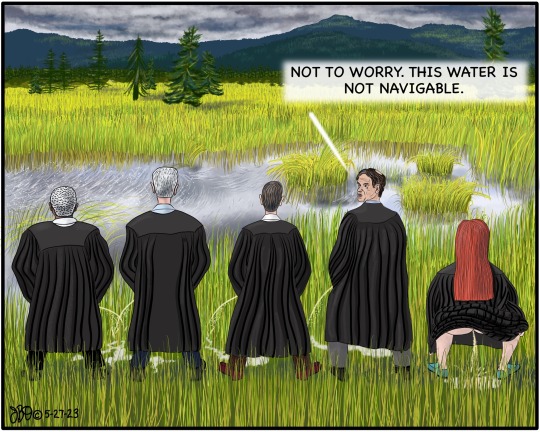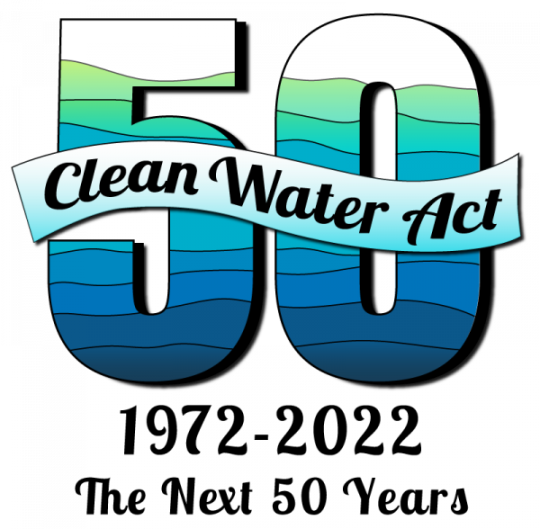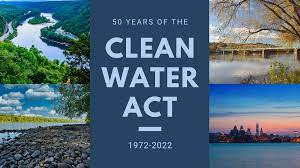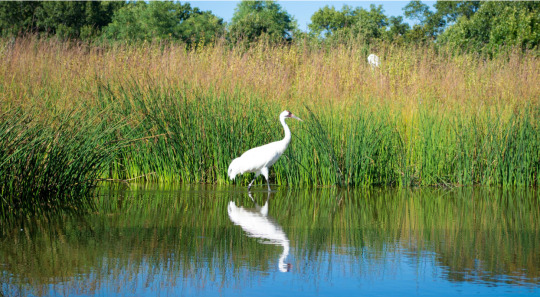#clean water act
Link
Another dangerous ruling by Samuel Alito
The far right justices on the Supreme Court are out of control and appear to be totally lacking concern for the health and wellbeing of their fellow Americans. Samuel Alito decided to trash the meaning of the Clean Water Act by defining “water” in a ridiculously limited way. Now he has opened the floodgates again to massive pollution of our waterways via wetlands.
Justice Antonin Scalia died more than seven years ago, but the Supreme Court’s decision in Sackett v. Environmental Protection Agency on Thursday shows that this is the “Scalia Court” far more so than when he was alive.
[...]
The precise legal issue decided in Sackett concerns the geographic scope of the 1972 Clean Water Act. Congress intended the law to end the practice of the nation’s waterways being used as the unregulated dumping ground for industrial pollution. The effect was transformational: For the first time in the nation’s history, any discharge of pollutants into the nation’s waterways absent a permit was unlawful, making it possible to safely fish and swim waters throughout the country.
Congress was not at all shy about the geographic reach of the Clean Water Act. The statute targeted discharges into “navigable waters,” but Congress also expressly defined that to include all “waters of the United States.” Since the mid-1970s, the courts have uniformly agreed that Congress intended with that expansive definition to extend the law’s protections far beyond traditional navigable waters to include the wetlands, intermittent streams and other tributaries that feed into the nation’s major rivers and lakes.
In a unanimous opinion for the court almost 40 years ago, Justice Byron White explained why. While acknowledging that “on a purely linguistic level, it may appear unreasonable to classify ‘lands’ wet or otherwise as ‘waters,’” the court said “such a simplistic response … does justice neither to the problem faced by the [government] nor to the realities of the problem of water pollution that the Clean Water Act was intended to combat.”
Justice Samuel A. Alito Jr.’s opinion in Sackett, however, embraces the very “simplistic response” that the court rightly criticized in 1985. Relying on a dictionary definition of “waters” and ignoring the Clean Water Act’s purpose, the court’s conservative majority has adopted a radically truncated view of the reach of the law’s restriction on water pollution. Under the court’s new view, pollution requires a permit only if it is discharged into waters that are “relatively permanent, standing or continuously flowing bodies of water, ‘forming geographic[al] features’ that are described in ordinary parlance as ‘streams … oceans, rivers, and lakes.’” And “wetlands” are covered only if they are “indistinguishably part” of those narrowly defined covered waters.
[...]
The impact of the majority ruling is potentially enormous. It could lead to the removal of millions of miles of streams and millions of acres of wetlands from the law’s direct protection. Basic protections necessary to ensure clean, healthy water for human consumption and enjoyment will be lost. As highlighted by Justice Elena Kagan’s separate opinion, the court’s opinion “prevents the EPA from keeping our country’s waters clean by regulating adjacent wetlands.”
Nor will the nation’s economy be spared. Myriad businesses rely on clean water for their industrial processes. The fishing, real estate and tourism industries are all highly dependent on the protections that the Clean Water Act has provided over the past half-century.
None of this was compelled by law. Even Justice Brett M. Kavanaugh rejected Alito’s majority view, announcing that he “would stick to the text.” Congress spoke clearly in the Clean Water Act about its ambitions and backed that intent up with deliberately sweeping language to provide the EPA with the discretionary authority it needed to realize those goals. Our nation’s waters are far cleaner as a result. Yet, for the second time in less than a year, an activist Supreme Court has deployed the false label of “separation of powers” to deny the other two branches the legal tools they require to safeguard the public.
[emphasis added]
#supreme court#samuel alito#clean water act#epa#trashing protections for waterways#wetlands seep into waterways#dangerous ruling#richard j lazarus#katherine aibel#the washington post
251 notes
·
View notes
Text
many of the countries wetlands are no longer federally protected under the Clean Water Act thanks to another fucking Supreme Court decision made earlier this year


#wetlands#clean water act#Supreme Court#epa#environmental protection agency#environment#nature#this is fucked we are so fucked up as a species I can’t man#npr
35 notes
·
View notes
Link
#candice gaukel andrews#carbon takeback obligation#clean air act#clean energy#clean water act#climate change#divestment#earth day#earth day 2023#environment#environmental protection agency#fossil fuels#founder of earth day#global warming#ipcc#natural habitat adventures#nathab#nature#nature lovers#net-zero emissions#outrider foundation#paris climate agreement#science#science and environment#scientific research#senator gaylord nelson#solar power#tia nelson#wind power#world wildlife fund
5 notes
·
View notes
Text
Well this sucks
4 notes
·
View notes
Text

Sackett v. EPA
#political satire#editorial cartoons#politics#political cartoon#scotus#us supreme court#wetlands#epa#enviromental#cleanwater#clean water act#republican
3 notes
·
View notes
Text
Supreme Court limits Clean Water Act

View On WordPress
#America#clean water act#congress#environment#epa#meme#memes#news#pollution#supreme court#united states#water
5 notes
·
View notes
Text
The Supreme Court on Thursday sharply limited the federal government’s authority to police water pollution into certain wetlands, the second decision in as many years in which a conservative majority narrowed the reach of environmental regulations.
The outcome could threaten efforts to control flooding on the Mississippi River and protect the Chesapeake Bay, among many projects, wrote Justice Brett Kavanaugh, breaking with the other five conservatives. Environmental advocates said the decision would strip protections from tens of millions of acres of wetlands.
The justices boosted property rights over concerns about clean water in a ruling in favor of an Idaho couple who sought to build a house near Priest Lake in the state’s panhandle. Chantell and Michael Sackett objected when federal officials identified a soggy portion of the property as a wetlands that required them to get a permit before filling it with rocks and soil.
By a 5-4 vote, the court said in an opinion by Justice Samuel Alito that wetlands can only be regulated under the Clean Water Act if they have a “continuous surface connection” to larger, regulated bodies of water. There is no such connection on the Sacketts’ property.
3 notes
·
View notes
Quote
We have laws on the books already that are meant to regulate pollution and emissions from manufacturing and production facilities,” said Anja Brandon, US plastics policy analyst at the Ocean Conservancy, a nonprofit that works to protect oceans and marine life. “Namely in this instance, the Clean Water Act, kind of our bedrock environmental law. These laws haven’t been updated to meet the needs of the moment,” said Brandon. In most of the country, she explained, “plastic nurdles have essentially gotten off scot free because they have yet to be classified or specifically labeled as a pollutant.” The rare exception is California, which in 2007 became the first and so far only state to pass a law classifying nurdles as pollutants to be regulated under the Clean Water Act, citing their contribution to litter on beaches and the possibility that they could be mistaken for food by marine animals.
Neel Dhanesha, ‘The massive, unregulated source of plastic pollution you’ve probably never heard of’, Vox
#Vox#Neel Dhanesha#pollution#production facilities#manufacturing facilities#Ocean Conservancy#Anja Brandon#Clean Water Act#plastic nurdles#California#United States#marine animals
6 notes
·
View notes
Link
Excerpt from this story from Sierra Club:
For nearly 15 years, some of the country’s biggest polluters and extractive industries have sought to attack the Clean Water Act—the 50-year-old law that safeguards the integrity of the country’s waters—via a lawsuit called Sackett v. EPA. As the Supreme Court’s new session opened on Monday morning, environmental law experts feared that industry might finally succeed, and that the conservative-dominated court would take the Sacketts up on their invitation to water down the Clean Water Act. “Nothing good can come of this,” Dave Owen, a professor at UC Hastings School of Law, told Sierra before the court heard the case.
But oral arguments at the court’s first case of this term showed a number of justices—including some conservative ones—who appeared unwilling to radically rewrite the Clean Water Act. The Sacketts and their corporate allies may find that sometimes you can go fishing and come up with nothing.
When is a body of water not really a body of water? What, exactly, is the meaning of the word adjacent? Those seemingly arcane semantic questions dominated the arguments in Sackett v. EPA, a case filed by an Idaho couple who run a commercial construction and excavation business against an EPA decision that they needed a federal permit to build a home on a marshy area not far from Idaho’s Priest Lake. The plaintiffs’ law firm, the conservative Pacific Legal Foundation, has sought to portray the couple as an ordinary family just looking to construct a house for themselves who were stymied by federal regulations after they dumped fill into a wetland. “It’s now going on 16 years since petitioners Mike and Chantell Sackett began construction of a house on a vacant lot in a largely built-out subdivision, yet their plans remain on hold to this day,” the couple’s attorney, Damien Schiff, stated at the outset of Monday’s hearing.
The case, like nearly all that come before the Supreme Court, is likely to establish a precedent that stretches far beyond the particulars of this dispute. The Sacketts’ case has become a stalking horse for a larger campaign by some of the country’s largest industries to chop away at the scope of the Clean Water Act. Those filing briefs supporting the Sacketts included the American Petroleum Institute, the American Exploration and Mining Association, the National Homebuilders Association, and mining giant Freeport-McMoRan. At issue is whether the law will continue to cover 50 million acres of wetlands, fens, and marshes—water bodies that are integral to the overall water quality and which have enjoyed Clean Water Act protection over the course of seven Republican and Democratic presidential administrations.
5 notes
·
View notes
Text
Yall want riveting reading content?
The Clean Water Act of 1972 is publicly available to read through and has watershed ecology learning modules that vary by age/education level...
Yknow... If you care about having clean public water and live in the United States 👀
5 notes
·
View notes
Text

We said it was next
4 notes
·
View notes
Text
The U.S. Supreme Court on Monday began hearing oral arguments in a case that corporate polluters are hoping will take an axe to the Clean Water Act, a bedrock environmental law that protects the nation's streams and wetlands from industry exploitation.
The long-brewing case in question, Sackett v. Environmental Protection Agency, was brought by Idaho couple Chantell and Michael Sackett in partnership with the right-wing Pacific Legal Foundation—and with the backing of industry groups eager to curtail the federal government's authority to regulate and preserve the nation's waterways.
In an analysis of the case's implications, Earthjustice argued last week that Sackett v. EPA "is not about a parcel of land, let alone a lake house, but is a coordinated push by industry polluters that want to blow a hole in the Clean Water Act, bulldoze cherished wetlands, and contaminate the country's streams with waste from mining, oil and gas, and agro-industrial operations as they see fit, just to maximize their profits."
"If the Supreme Court excludes Clean Water Act protections from major wetlands and other waters," the group warned, "the damage to water quality, flood control, and wildlife habit would be severe, and could pose a grave danger to communities across the country, especially low-wealth communities, Indigenous communities, and other communities of color that all too often bear the brunt of toxic pollution, flooding, and excessive industrial development."
"This decision will be nothing short of a life-or-death sentence for coho salmon, razorback suckers, California tiger salamanders, and hundreds of other endangered animals that rely on ephemeral and intermittently flowing streams and wetlands," Hannah Connor, a senior attorney at the Center for Biological Diversity, said in a statement to The Washington Post.
2 notes
·
View notes
Text
Modern History The Clean Water Act (CWA)
The Clean Water Act (CWA), also known as the Federal Water Pollution Control Act Amendments of 1972, is a U.S. legislation enacted in 1972. It establishes the basic structure for regulating discharges of pollutants into water bodies. The CWA created new requirements for technology-based standards for point source discharges, which are regulated by the Environmental Protection Agency (EPA).


The primary goal of the CWA is to restore and maintain clean water in the United States. It addresses various issues related to water pollution, including wastewater treatment, water quality standards, and the protection of wetlands and aquatic ecosystems. As amended in 1972, the law became commonly known as the Clean Water Act (CWA). The 1972 amendments: Established the basic structure for regulating pollutant discharges into the waters of the United States. Gave EPA the authority to implement pollution control programs such as setting wastewater standards for industry. Maintained existing requirements to set water quality standards for all contaminants in surface waters. Made it unlawful for any person to discharge any pollutant from a point source into navigable waters, unless a permit was obtained under its provisions.Funded the construction of sewage treatment plants under the construction grants program. Recognized the need for planning to address the critical problems posed by nonpoint source pollution.
Subsequent amendments modified some of the earlier CWA provisions. Revisions in 1981 streamlined the municipal construction grants process, improving the capabilities of treatment plants built under the program. Changes in 1987 phased out the construction grants program, replacing it with the State Water Pollution Control Revolving Fund, more commonly known as the Clean Water State Revolving Fund. This new funding strategy addressed water quality needs by building on EPA-state partnerships.
Over the years, many other laws have changed parts of the Clean Water Act. Title I of the Great Lakes Critical Programs Act of 1990, for example, put into place parts of the Great Lakes Water Quality Agreement of 1978, signed by the U.S. and Canada, where the two nations agreed to reduce certain toxic pollutants in the Great Lakes. That law required EPA to establish water quality criteria for the Great Lakes addressing 29 toxic pollutants with maximum levels that are safe for humans, wildlife, and aquatic life. It also required EPA to help the States implement the criteria on a specific schedule.


1 note
·
View note
Text
Surfrider Magazine
Ocean Friendly Restaurant Spotlight
The James Family have three children and their family home is in the Chesapeake Bay watershed, just a few miles from their oceanside restaurant. They rely on the surrounding lands and waterways for their entirely locally sourced menus. Protecting the ocean and coast is not just a business decision, but part of their personal values system. Every decision they make takes into account the impact on the local environment.
Some examples of their Ocean Friendly commitment include the use of renewabe energy, provision of locally sourced produts, eliminating single-use packaging, choosing environmentally friendly cleaning products, and reducing waste through composting and recycling. Becoming the first Ocean Friendly Restaurant in Maryland for Mother's Cantina was a natural reflection of the values they hold as a local business.
Mother's Cantina and the James Family use their platform to inform other businesses about transitioning to environmentally friendly practices. In coordination with the Ocean City Chapter of the Surfrider Foundation, Mother’s Cantina holds informational meetings, promotes beach clean-ups, and takes every opportunity to publicly advocate for programs and policies that protect their environment. They advocate to ensure that other local restaurants learn about compostable packaging, eliminating straws, using renewable energy, and sourcing local products, all while keeping the bottom line in mind.
Ryan James recently represented the Eastern Shore with testimony in favor of HB109 foam ban, which went on to pass and make Maryland the first state to ban food service providers from offering polystyrene foam containers. With this recent success, the business is planning to continue their support for clean energy jobs, funding for the protection and support of the Chesapeake Bay, and supporting a local organic gardening program.
Mother's Cantina and the James Family are spreading the Ocean Friendly movement across Maryland and the Surfrider Foundation is proud to have them as a leader in the restaurant industry in the fight to protect clean water and healthy beaches!
Want to support an Ocean Friendly Restaurant near you?
go.surfrider.org/ofr-app displays a national map of Ocean Friendly Restaurants and you cand find and support your local sustainable business.
Watch the video that explains the program and the criteria to join.
#motherscantina#oceancitymaryland#ocmd#margaritas#tacos#clean water act#plastic bag ban#composting#Neely James#Ryan James
0 notes
Text
Groups sue EPA to force better regulation of large farms to protect water
More than a dozen groups, including 2 in Wisconsin, want the EPA to revise its regulations for large livestock operations.
By Danielle Kaeding | Wisconsin Public Radio
More than a dozen citizen and environmental groups are suing the Environmental Protection Agency to force better regulation of large farms to protect water quality.
Food & Water Watch, along with a dozen other groups, filed a lawsuit on Friday in federal court. The legal challenge follows the EPA’s rejection of two petitions that had sought revisions…

View On WordPress
0 notes
Text
Anti-Wetland Protections-Another Law for State Rights
The Environmental Protection Agency (EPA) and Department of the Army (DA) will no longer be permitted to regulate certain bodies of water following a recent change in the legal definition of a state-protected wetland. On May 25, the Supreme Court ruled in Sackett v. Environmental Protection Agency that the EPA overstepped its powers under the 2006 Clean Water Act, which protects all waters within…

View On WordPress
#anti-wetland protections#clean water act#environmental protection agency#state rights#supreme court
1 note
·
View note